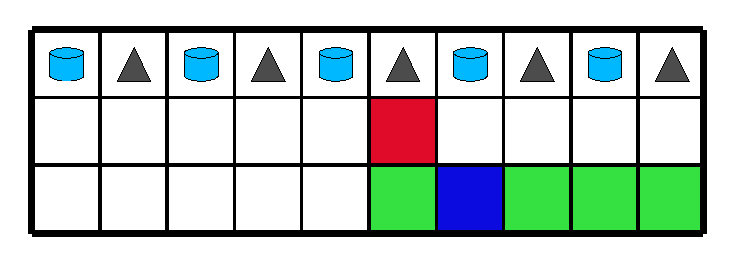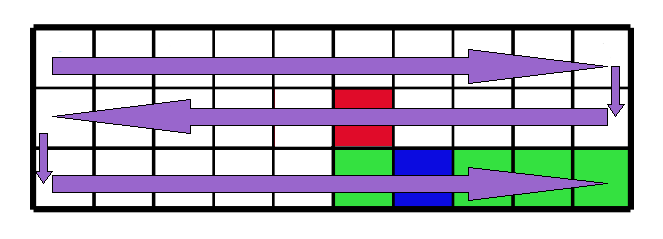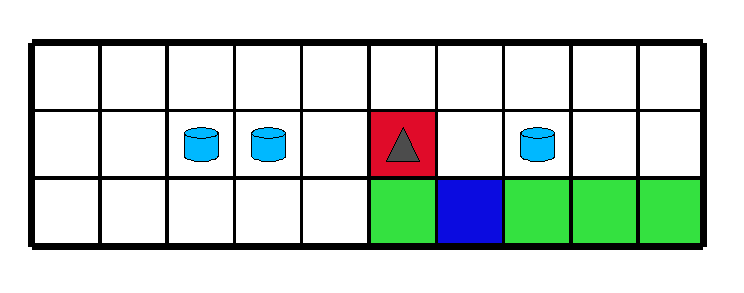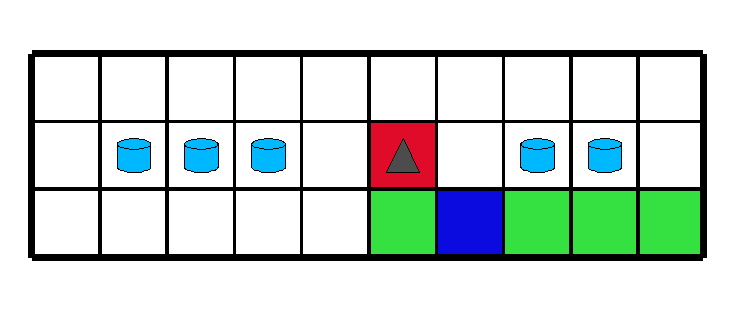More actions
| Senet | |
|---|---|
| File:Senetwii.jpg | |
| General | |
| Author | Pedrocrespo |
| Type | Board |
| Version | 0.05b |
| License | Creative Commons by-nc-nd 3.0 |
| Last Updated | 2009/07/10 |
| Links | |
| Download | |
Senet, a board game from predynastic and ancient Egypt, is the oldest board game whose ancient existence has been confirmed, dating to circa 3500 BC. Soon you'll be able to play it on your Wii, and understand why Tutankhamen has two senet gameboards inside his tomb.
Rules (based on Spanish Wikipedia's)
The objective in Senet is to remove your pieces from the board before your opponent, by following a few rules, advancing your own pieces and catching or blocking your adversary's ones.
It is a game for two players and consists of a board with three parallel rows of ten squares each as well as ten small playing pieces. One player controls the five conical pieces and the other plays the cylindrical ones.
The order of the squares is 1 through 10 from left to right on the first row, 11 through 20 from right to left on the second row and 21 through 30 from left to right on the third row. At the start of the game, the first row must be filled by the gamers' pieces, arranged alternatively (ABABABABAB). Several special squares exist. They are 15, 26, 27, 28 and 29 (these special squares can contain hieroglyphic drawings or symbols).
If a player falls in square 27 he must begin from square 15 (as happens in some squares of the 'Game of the Oca') but if square 15 is engaged, the piece that fell into square 27 must move to the nearest free square to square 1. Squares 26, 28, and 29 are squares where pieces are protected.
Moving the piece out of the board (to a supposed square 31) is counted as a move.
Dice are not used to determine the advancement of pieces, rather four small sticks with two white faces and two black faces are rolled. The amount moved is decided by how many white faces are rolled (1, 2, 3 or 4). If all black faces are rolled, move six. There does not exist a roll resulting in a move of 5.
Every time a player rolls a 1, 3 or 6, he gets another turn. After moving the piece he wanted or was able to move, he rolls and goes again until he rolls a 2 or a 4.
When two pieces of the same player are in consecutive squares, they are both protected and cannot be captured by the adversary; when they are three pieces of the same player, they form a barrier that the opponent cannot jump, but the barrier owner can jump.
The capture of an opponent's piece consists of interchanging the position of the capturing piece by the position of the captured piece. This can only be done when the captured piece is not protected and on the last square of capturing piece's movement.
When it is not possible to move forwards (protected pieces or barrier) but moving backwards is possible, it is obligatory to move backwards.
Media
How to play
|
Game start. Starting setup is shown, with special squares filled: green are protection squares, blue is the square that makes you move to the red one if you land on it. |
Gameplay direction. In this picture you can see the direction pieces must be moved while playing, except if they can't move this way, and have to move backwards instead. |
|
Pieces protecting themselves. If it is the conic piece's turn and he rolls a 2 or 3, he won't be able to move forwards, because the cylindrical pieces are next to each other and protected from being captured. So the conic piece would have to move backwards because it can. In this case, if he rolled a 2 he would capture the cylindrical piece two squares behind him, but this move wouldn't be beneficial to this player, because he would now have three opponent's pieces ahead. The conic piece could jump the opponent's pieces with a 4 or a 6, because there's no barrier. Of course, if he rolls a 1 he can move to the next square, because it's empty.]] |
Barrier. If it is the conic piece's turn, he won't be able to move forwards unless he scores a 1, because of the barrier of three cylindrical pieces preventing him from jumping over them but still allowing their owner to jump them. In this case (a roll other than 1), the conic piece would have to move backwards, but it only could do so by rolling a 4 or 6, because the cylindrical rear pieces are protecting themselves. If backward moving is not possible and this player hasn't any other movable piece on the board, he must pass his turn. |
Controls
Menu
The menu is controlled using Wiimote 1
| Wiimote | Action |
|---|---|
| Wiimote Aim | Move pointer |
| Wiimote A Button | Select item |
| Wiimote DPad Up / Wiimote DPad Down | Move through menu. In the tutorial, continue reading. |
Game
The game is controlled using Wiimotes 1 and 2
| Wiimote | Action |
|---|---|
| Wiimote Aim | Move pointer |
| Wiimote B Button | Roll the sticks |
| Wiimote A Button | Select piece to move |
| Wiimote Home Button | Quit game / return to menu |
| Wiimote Plus Button + Wiimote Minus Button | If a player can't move, he can pass the turn by holding PLUS, while the adversary presses MINUS. |
Screenshots



Changelog
v0.05b (10-07-09)
Passing turn function has been fixed because it wasn't working properly. Please, let me know any bug you'd find. Suggestions are welcome too.
v0.05 (09-07-09)
It includes all the rules shown above but two:
- jumping multiple barriers isn't allowed.
- if advancing forward is not possible, move backwards if it is.
A basic howtoplay tutorial (tut-ankh-orial) has been included too, but it's just this same page for now. --Pedrocrespo 23:09, 9 July 2009 (UTC)




